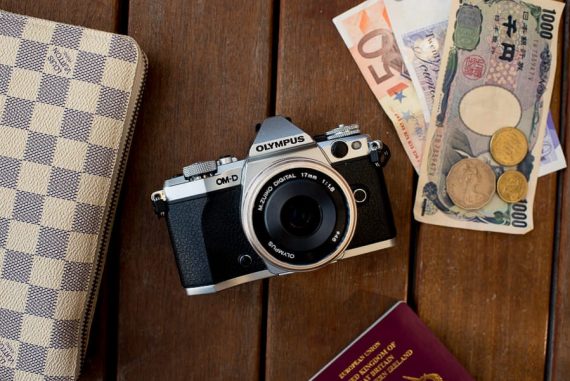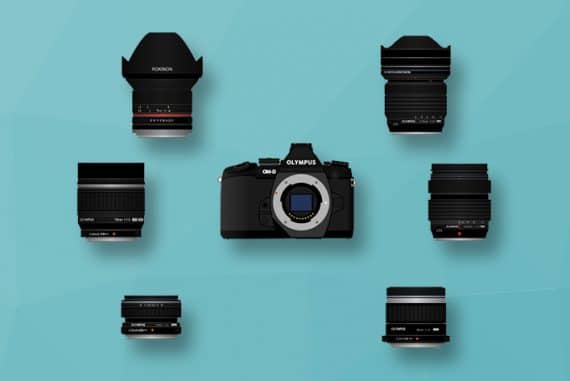
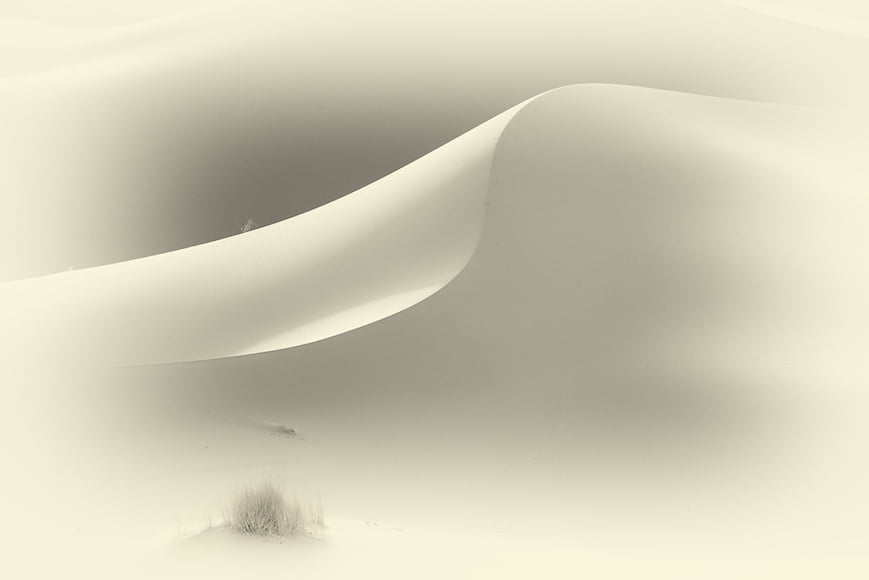

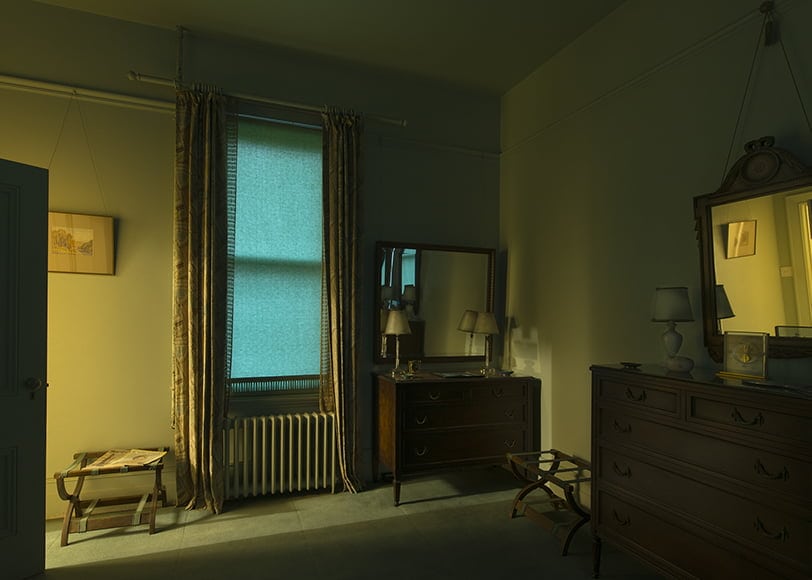


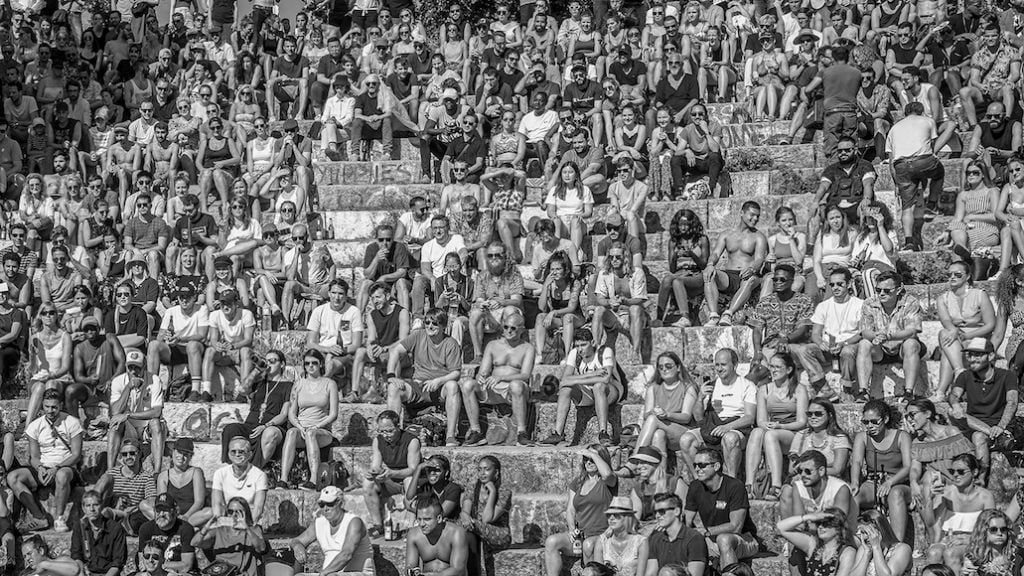

Ian Kemp
Fine Art | Last Updated: April 19, 2021
My time with photography has been a short one. I graduated with an Advanced Diploma of Photography in 2017 and I’ve been doing a slow build into a professional business since then with group exhibitions and my first solo exhibition at the start of 2020. I’ve shot a couple of weddings and events and will continue to do that for income.
Perhaps some back story is needed at first. My lifetime career was in education: I was a secondary school English teacher and then a principal. It was only during a period of grief after my wife died that I decided to break my social isolation and join a group.
Quite randomly I chose a photography club and it all started from there. They taught me the basics (I really knew so little) and I then completed four years of part-time study at Photography Studies College in Melbourne. In my final year, I had to select a specialisation and for me, it was a no-brainer – fine art. I loved the freedom and the challenges that it brought.
A theme that runs through much of my work is that of the transience of human life. Nothing lasts forever and that which exists undergoes constant change. You will find this concept underpinning a lot of my work, whether it is fine art work, my music photography (because no two performances will ever be the same) and in my travel photography images.
I also like the challenge of completing a body of work that is consistent. That’s where the excitement of creating something from scratch really thrills me. You have to understand that I still have moments when I wonder how I got here at all; or that people will be moved by an image that I have created; or that they will commission me to take photographs. It’s wonderful but it’s also strange.
I don’t think I’ll ever stop learning. Being a late starter I can’t ever get decades of experience but I can get ideas and that’s where the fun starts for me. My images are not what I see through the lens of my camera, they come from somewhere else. I like the quotation from Picasso, ‘Learn the rules like a pro so that you can break them like an artist.’ I hope that I’m always able to do that.
When I bought my first camera it was a Nikon D300E and once you join a tribe you tend to stay there. Part of it is because you have a kit of lenses and it’s expensive to change, but it’s also because you become familiar with the format. I persisted with that camera until one day I was standing next to a friend who had a full-frame Nikon D800E.
Simultaneously we took a photograph of a water skier on the same settings and compared images. As soon as I saw what a full-frame camera would do I wanted one. His image was so much better. I bought a Nikon D800E within a week and was so happy with it. Nikon cameras are really good in low light shooting conditions and the image quality excels.
When the Nikon D850 came out I was quick to get one – who wouldn’t want a camera that was often voted the best DSLR in the world in its sector of the market – what an amazing camera! There is so much to like about it. Image quality, low light shooting capabilities, rugged build, weatherproofing and the feel in my hand.
It is my go-to camera almost all of the time unless I need something less obtrusive. At those moments I will use my Olympus OM-D E-M5. This is much lighter, much smaller and less likely to be noticed when I do street photography. Its picture quality is very good but I find the dials a little fiddly and the menu sometimes requires a number of steps to change settings.
I have an iPhone 11 Pro Max which is also great for street photography and for putting images almost immediately on social media.
Cameras
Nikon D850 – This is absolutely my favourite camera. It’s like an extension to my hand. There are times when I’m blown away by its image quality capabilities in a variety of conditions. With so many pixels to work with, I can print really large images for exhibitions or crop out a lot of an image and still have a quality result.
Nikon D800E – This is now my extra camera which I can load up to save on lens changes. I used to love it, actually, I still do, but the Nikon D850 is so good it has to come off the bench now.
Olympus OM-D E-M5 – Great for my street photography and when I want something light to carry around with me.
iPhone 11 Pro Max – The camera that I always have with me. The wide-angle and zoom are more useful than I thought they would be. There are excellent editing apps for phone cameras now.
Lenses
Nikon 14-24mm f/2.8G ED – I use this for some of my landscapes, I don’t use this as much as I should.
Nikon 24-75mm f/2.8G ED – If I don’t want to carry other lenses with me this is the one I have on my camera, it is so versatile and the zoom allows for me to conveniently cope with changing circumstances.
Nikon 75-200mm f/2.8G FL ED – A really handy telephoto lens. Image quality is good and it creates great bokeh with portraits and nature shots.
Nikon 70-300mm f/4.5-5.6G ED – I don’t use this lens enough these days but it is a good zoom lens.
Nikon 50mm f/1.8D – Great for portraits.
Nikon 85mm f/1.8D – Another portrait lens for me.
Olympus 12-50mm f/3.5-6.3EZ – A good all-purpose lens. Image quality is good.
Olympus 75-300mm f4.8-6.7 II ED – Fantastic zoom lens for such a compact camera.
Lights/Triggers
Nikon Speedlight SB 910 – I don’t use this very much as I prefer to shoot in natural light or with my studio lights.
Elinchrom D-Lite RX4 – I’ve found these lights easy to use, flexible and good value for my studio and still life shoots.
Tripods
[Pro] Master Professional Tripod – It’s light and easy to carry on my backpack.Manfrotto MBAG80N tripod – It’s big, sturdy and great for studio shoots.
Bags/Straps
Lowepro camera bag (I can’t find the model number) – It’s a great general purpose bag that can carry two cameras and two lenses or one camera and a full kit of my Nikkor lenses. That said, I am looking to upgrade this in the near future.
Hardware & Software
I do my processing with Lightroom CC and Photoshop 2020 and sometimes I will use Nik Silver Efex Pro 2 and Colour Efex Pro 4 (guide) when I want some presets for my images. My computer is an Apple iMac with a 27-inch screen in tandem with an Eizo CG277 monitor. I store my work on a Promise Pegasus 3 R4 hard drive.
Just remember that as photographers we are illusionists. We play with people’s perceptions of reality. So have a voice, play with different ways of making your images, and most of all, enjoy your art.
www.iankempphotography.com | @iankempphotography

Check out these 8 essential tools to help you succeed as a professional photographer.
Includes limited-time discounts.





